Search
Remove Ads
Advertisement
Summary 
Loading AI-generated summary based on World History Encyclopedia articles ...
Search Results
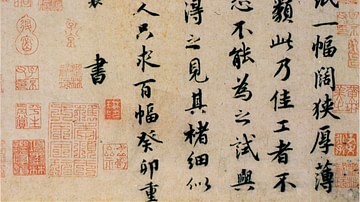
Definition
Ancient Chinese Calligraphy
Calligraphy established itself as the most important ancient Chinese art form alongside painting, first coming to the fore during the Han dynasty (206 BCE - 220 CE). All educated men and some court women were expected to be proficient at...
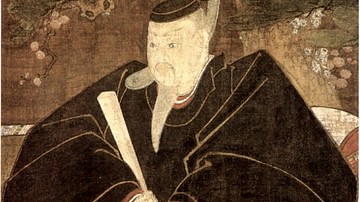
Image
Tenjin (Sugawara no Michizane)
A representation of Sugawara no Michizane, aka Tenjin, (845-903 CE) on painted silk. Michizane was a scholar, poet and high-level administrator in the Japanese court during the Heian Period. He was later deified as the god of scholarship...

Definition
Tenjin
Sugawara no Michizane, aka Tenman Tenjin (845-903 CE), was a scholar, poet, and high-level administrator in the Japanese court during the Heian Period. Badly treated and exiled, he would gain a spectacular revenge on his political rivals...
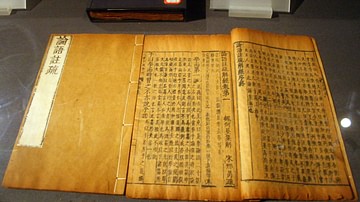
Definition
Confucianism
Confucianism is a philosophy developed in 6th-century BCE China, which is considered by some a secular-humanist belief system, by some a religion, and by others a social code. The broad range of subjects touched on by Confucianism lends itself...
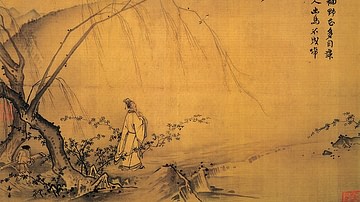
Definition
Ancient Chinese Art
Ancient China covered a vast and ever-changing geopolitical landscape, and the art it produced over three millennia is, unsurprisingly, just as varied. Still, despite continuous indigenous technical developments, changes in materials and...

Video
Secrets of D-Day: The Great Invasion (Full Episode) | Drain the Oceans WW2
In the greatest amphibious invasion fleet ever assembled, 7,000 vessels and 250,000 men take the Nazis by surprise. By draining the ocean, we explain exactly how they did it. Enjoy a free trial of National Geographic right here: https://ngmdomsubs.nationalgeographic.com/servlet/OrdersGateway?cds_mag_code=NG9&cds_page_id=...
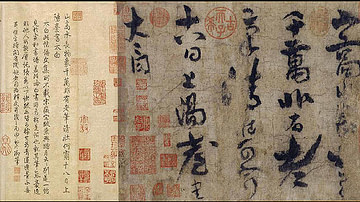
Image
Li Po's Calligraphy
"Going Up to Sun Terrace", calligraphy scroll by the Tang Dynasty poet Li Bai, the only surviving example of Li Po's own calligraphy, is now housed at the Palace Museum in Beijing, China

Image
Mughal Calligraphy & Ornamentation
Examples of illuminated calligraphy and ornamentation from two Mughal folios. Ink with opaque watercolour and gold on paper. The calligraphy is by Mir 'Ali, 16th century, Iran; borders, (left) about 1610 – 20, (right) c. 1630 – 50, Mughal...

Video
Secrets of China's Terracotta Warriors english documentary Part 1
This is a very good video on the history of the Terracotta Warriors of Ancient China. The most interesting part is about human sacrifice in China where the members of the court would be killed to join the emperor when he died and serve him...
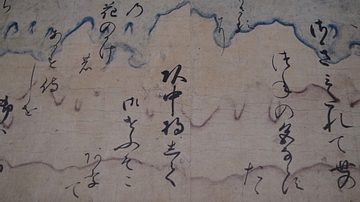
Image
Japanese Calligraphy
An example of Japanese calligraphy. From a scroll with extracts from the 'Tale of the Genji' or Genji Monogatari, written in the 11th century CE by Murasaki Shikibu. Ink on decorated paper. Attributed to Prince Son'en (1298-1356 CE). (Tokyo...